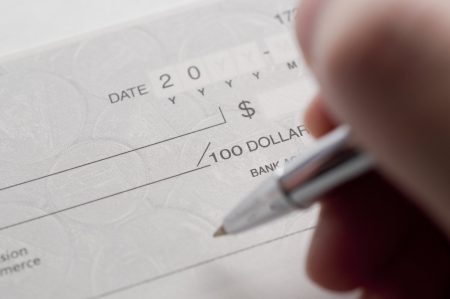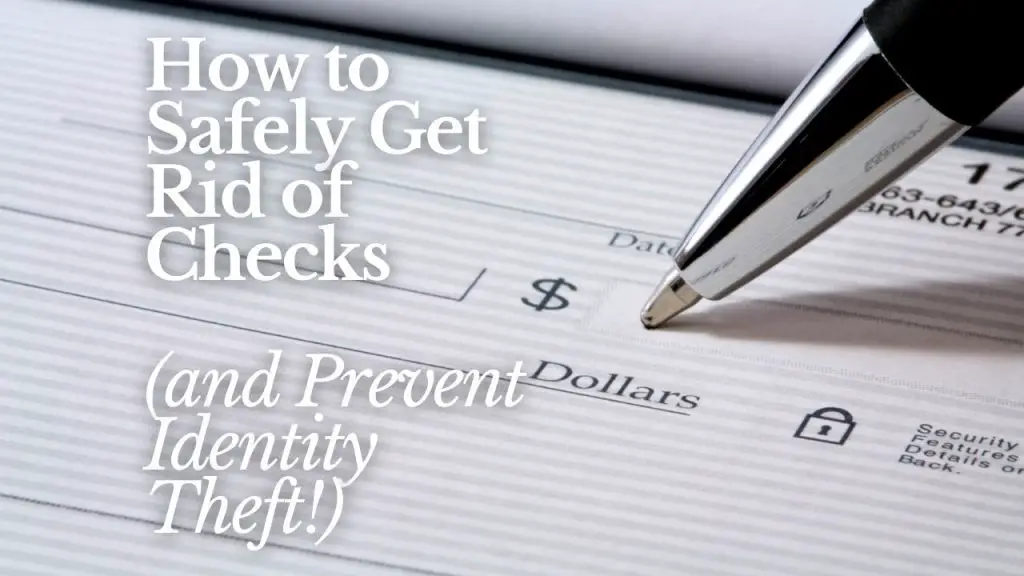There are a few steps you can take to get rid of checks and prevent identity theft safely:
- Destroy the checks: If you no longer need to keep them, it is best to destroy them. This can be done by shredding them, tearing them into small pieces, or using a check-destroying machine.
- Please keep track of your checkbook: Keep track of it and ensure that it is not lost or stolen. This can help prevent someone from accessing and using your checks without your knowledge.
- Use online banking and electronic payment methods: Consider switching to electronic payment methods, such as online banking or electronic payment services like PayPal, to reduce the need for checks.
- Be cautious when giving out personal information: Be careful about giving out personal information, such as your Social Security number, bank account number, or other sensitive information, to anyone you do not know or trust.
- Monitor your accounts regularly: Regularly check your bank and credit card statements to ensure no unauthorized transactions or suspicious activity. If you notice any unusual activity, report it immediately to your bank or credit card company.
These steps can help protect yourself from identity theft and secure your financial information.
Should Old Checks Be Thrown Away?
It is generally recommended to destroy old checks you no longer need or use. If you have old checks you no longer need, it is best to destroy them to prevent someone from accessing and using them without your knowledge. This can be done by shredding the checks, tearing them into small pieces, or using a check-destroying machine.
If you need to keep old checks for record-keeping purposes, it is essential to store them in a secure location where others cannot access them. For example, you can store them in a locked cabinet or safe.
It is also a good idea to consider switching to electronic payment methods, such as online banking or electronic payment services like PayPal, to reduce the need for checks. This can help reduce the risk of identity theft and financial fraud.
How Many Checks Are Used Each Year?
There were 42.6 billion check payments in 2000. A Federal Reserve Payments Study in 2019 found that check payments declined by 7.2% yearly.
What Could Happen if Checks Aren’t Properly Handled
Identity theft and financial fraud are risks if checks are not properly handled. This can happen if someone obtains your checks and uses them to access your financial accounts or make unauthorized purchases.
If your checks are lost or stolen, you must report this to your bank or credit card company as soon as possible. This can help prevent someone from accessing your accounts and using your checks without your knowledge.
In addition, if you do not correctly destroy old checks that you no longer need or use, there is a risk that someone may find them and use them to commit financial fraud. For this reason, it is crucial to destroy old checks securely, such as by shredding them or tearing them into small pieces.
By handling checks properly and taking steps to protect your financial information, you can help reduce the risk of identity theft and financial fraud.

When It’s Okay to Discard an Old Check
Discarding an old check when you no longer need it or use it is generally okay. For example, if you have an old check you received as a gift or for reimbursement, and you do not need to keep it for record-keeping purposes, it is generally okay to discard it.
However, it is essential to properly destroy old checks before discarding them to prevent someone from accessing and using them without your knowledge. This can be done by shredding the checks, tearing them into small pieces, or using a check-destroying machine.
If you have old checks that you need to keep for record-keeping purposes, it is vital to store them in a secure location where others cannot access them. For example, you can store them in a locked cabinet or safe.
Properly handling old checks and protecting your financial information can help reduce the risk of identity theft and financial fraud.
In case of used or canceled checks, you should maintain an organized file or register and keep a record of them for at least 3 to 7 years, depending on what kind of payment it is.
- Keep a check for non-tax-deductible payments for at least a year, preferably three years, lest you need proof to resolve any confusion soon. Credit card convenience checks should be safeguarded too. Even if the payment is not tax-deductible, you might need the check for proof if the item itself is stolen or destroyed.
Keep credit card receipts and checks until your official statement is generated, and you can ensure it is correct.
- Keep checks for tax-deductible expenses for at least seven years. This is because the Internal Revenue Service (IRS) can take up to seven years to audit you.
- Keep checks for big properties like your home or other big transactions safe when you own that property. For example, proof of any money you spent on home renovation may come in handy in raising the price when you sell your home.
Are Checks Obsolete?
Their use is declining yearly as we develop new banking technologies, but they still have a use. Many people continue to rely on checks to pay retailers and employees.
How to Dispose of an Old Check
There are a few steps you can take to dispose of an old check:
- Determine if you need to keep the check: If you no longer need it or have no use for it, you can dispose of it. However, if you need to keep the check for record-keeping purposes, it is important to store it in a secure location where others cannot access it.
- Destroy the check: To dispose of an old check; it is essential to destroy it securely. This can be done by shredding the check, tearing it into small pieces, or using a check-destroying machine.
- Dispose of the remnants: Once the check has been destroyed, dispose of the remnants securely. This can be done by placing them in a sealed, secure container and disposing them in a secure trash bin.
Following these steps, you can securely dispose of an old check and help prevent identity theft and financial fraud.
Shredding by Hand or With a Pair of Scissors
If you only have a few checks to dispose of, shred them by hand or with scissors into tiny pieces. Cut through the important parts lengthwise, like your name, account details, etc. Don’t cut in a regular, easy-to-put-back manner. It should look like a pile of confetti when you’re done.
For added caution, dispose of parts of the shredded pile in different bags and on different days.
Using a Shredder
If you have lots of checks and whole checkbooks to dispose of, then shredding by hand is not an option. Use a motorized shredder if you have or can get one. But invest in a good cross-cut shredder that shreds paper into confetti, not just strips that can be put back together.
Shredding Services
If you don’t have a shredder and stacks of old checks and checkbooks, it is best to get them from a shredding service. Many banks, workplaces, government offices, and supply stores offer shredding services that you can use.
Other Options
Other creative options you can try at home are burning, soaking in a bucket of water and bleach, closing them in a cloth bag, and running them through a hot wash in your washing machine- basically anything which leaves them wholly illegible and useless!
Conclusion
In conclusion, it is essential to properly handle and dispose of old checks to prevent identity theft and financial fraud. If you no longer need or use an old check, it is best to destroy it securely by shredding it or tearing it into small pieces. If you need to keep old checks for record-keeping purposes, it is essential to store them in a secure location where others cannot access them.
In addition, consider switching to electronic payment methods, such as online banking or electronic payment services like PayPal, to reduce the need for checks. This can help reduce the risk of identity theft and financial fraud.
These steps can help protect yourself and your financial information from identity theft and fraud.

